Historic places and people that helped make Nashville ‘Music City’

- Oops!Something went wrong.Please try again later.
- Oops!Something went wrong.Please try again later.
NASHVILLE, Tenn. (WKRN) — History can be found around every corner in Nashville, from the Ryman Auditorium which once housed the Grand Ole Opry, to RCA Studio B, where artists like Dolly Parton and Elvis recorded hits.
It’s the long history of musical groups that likely earned Nashville the nickname “Music City.” But while the city is probably best known for country music, artists performing all types of music have played a role in Nashville’s renowned status as a music destination.
Music City: How Nashville got its famous nickname
Historical markers erected by the Metropolitan Historical Commission of Nashville and Davidson County and the Tennessee Historical Commission detail the places across Davidson County, as well as the people who have made an impact on music history.
Some spots are where world-famous songs were written, while other people and places are connected to the birth of Bluegrass, the acceptance of spiritual music as an authentic musical expression, and the nurturing of “Jesus Music.”
While places like the Ryman Auditorium are well-known, visitors are often less familiar with some of these stories and sites. Below are 10 historic places and people who helped make Nashville’s music scene what it is today.
Jefferson Street Music District
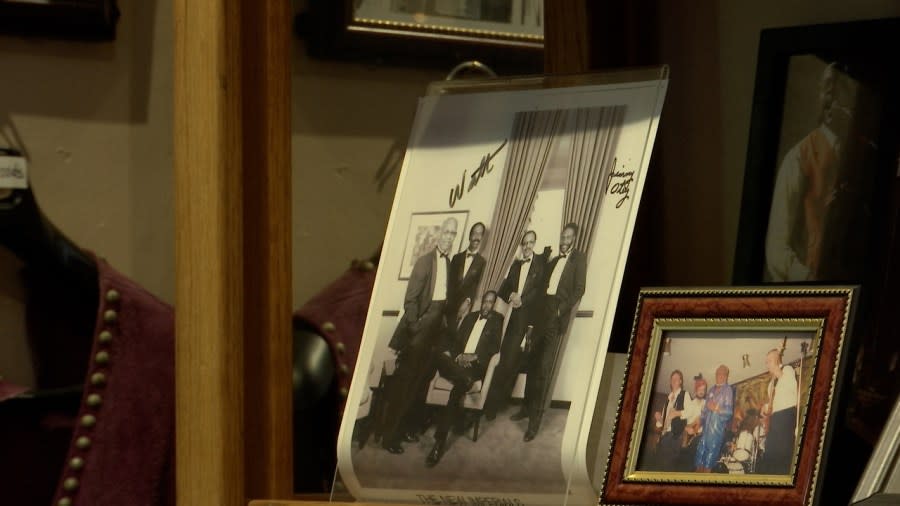
Nashville is known for its music, but one area of the city’s music heritage is today often forgotten. From the 1940s to the early 1960s, Jefferson Street was one of America’s best-known districts of jazz, blues, and rhythm and blues.
Famous Black musicians often played in the many clubs that lined the street. In 1962, one club, the Del Morocco, featured a house band fronted by a then-little-known musician named Jimi Hendrix, who went on to become one of the most celebrated rock guitarists.
How Nashville’s once extensive streetcar system became a thing of the past
Also on Jefferson Street, the Ritz Theater played host to a number of legendary names, including Duke Ellington. Other regular performers on Jefferson Street included Little Richard, Ray Charles, Fats Domino and Memphis Slim.
Many of the venues were later razed to make way for the construction of the Interstate Highways. A historical marker at the intersection of Jefferson Street and Interstate 40 commemorates the musical history of the area.
Hank Snow’s Rainbow Ranch

Clarence Eugene “Hank” Snow purchased this home on East Marthona Road in Madison with his wife Minnien in 1950, not long after his appearance on the Grand Ole Opry.
He was one of the first musicians in the United States to build and use a home studio.
Retro Nashville | Ride the nostalgia wave through Music City’s history
Snow’s band, the Rainbow Ranch Boys, took their name from the three-acre property dubbed the Rainbow Ranch, which was also home to Snow’s horse, Shawnee. Snow was elected to the Nashville Songwriters Hall of Fame in 1978 and the Country Music Hall of Fame in 1979.
A historical marker sits just outside of the property, about 0.2 miles south of West Old Hickory Boulevard.
Club Baron
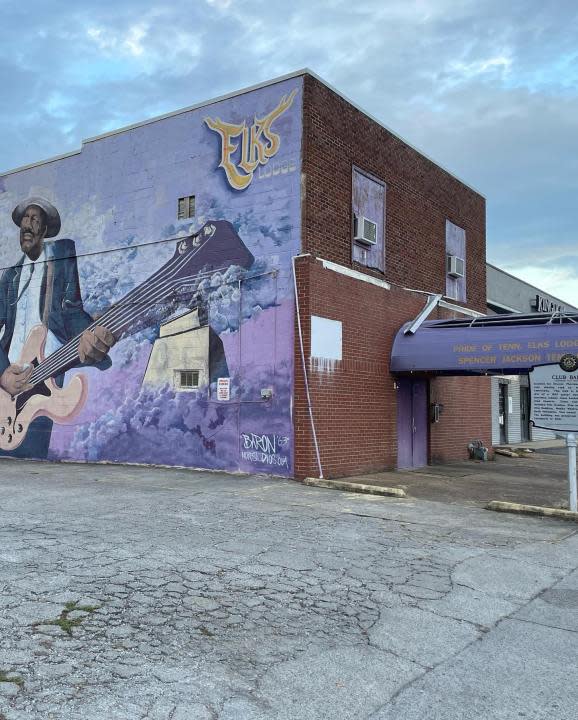
Built in 1955 during the golden age of Jefferson Street’s music scene from 1935 to 1965, Club Baron is the only extant nightclub from that time.
Owned by local pharmacist Jackson H. Brown, the building also served as a secondary location for Brown’s Pharmacy, as well as the only skating rink in town for Black Americans.
The club is best known as the site of a 1963 guitar duel where Nashville bluesman Johnny Jones bested up-and-comer Jimi Hendrix. Other well-known performers included Fats Domino, Etta James, Little Richard, Otis Redding, Muddy Waters, Jackie Wilson and Ruth McFadden.
Now owned by the Elks Lodge, the building was preserved as a local Historic Landmark in 2016. A historical marker is located outside the building on Jefferson Street, 0.1 miles west of 26th Avenue North.
Stringbean Memorial Dogwood Tree
This dogwood tree was planted at Opryland on November 28, 1973, as a living memorial to one of the Opry’s finest comedic banjo players, Dave “Stringbean” Akeman and his wife Estell Akeman after they were both killed in a home invasion and burglary a few weeks prior.
Stringbean came from a musical family and got his professional start in the early 1940s when he played banjo for Bill Monroe and the Blue Grass Boys. He was also a talented baseball player, and he played in the touring team that Monroe traveled with at the time.
Music City Mixtape: 12 places to explore Nashville’s musical history
By the 1950s, Stringbean was a major star at the Grand Ole Opry, well known for his spirited, old-time frailing banjo style and signature stage wear. In 1969, he became a regular cast member on the hit television program “Hee Haw” along with fellow banjo player and close friend Louis Marshall “Grandpa” Jones.
Today, the tree can be found alongside a historical marker near the Grand Ole Opry at 2804 Opryland Drive.
The Fisk Jubilee Singers
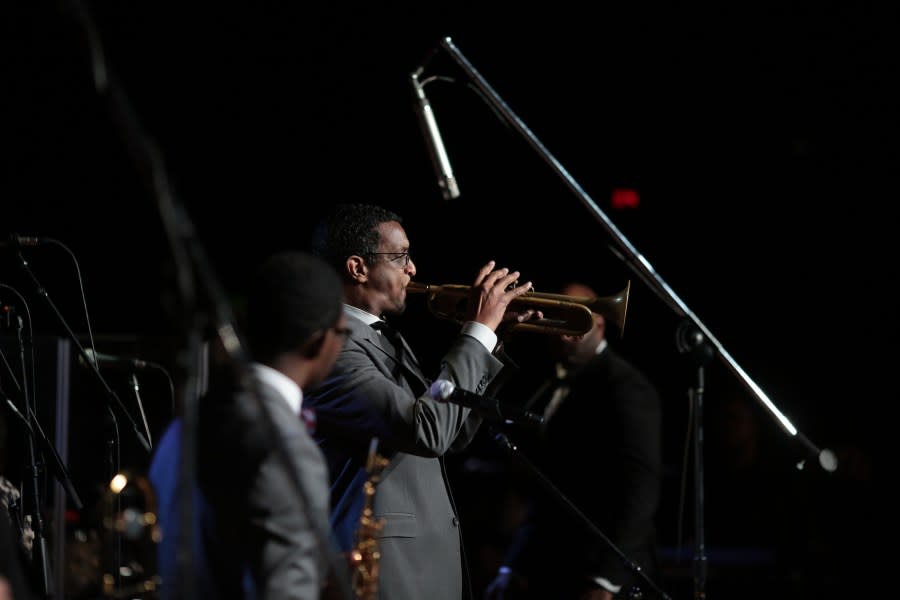
Less than five years after its creation, Fisk University was struggling financially, so in 1871, the school sent a nine-member student chorus on a fundraising tour of the northeastern United States.
On tour, the singers performed mostly popular tunes, sacred anthems and patriotic songs, interspersed with spirituals. However, small audiences, meager donations and the decision to gift what the singers had earned to victims of the Great Chicago Fire left the school right back where it had started.
Later that year, the group’s director, George White, decided that the group needed a name to grab attention and came up with the Jubilee Singers in memory of the Jewish year of Jubilee, a moniker that resonated with a biblical call for freedom.
100 Oaks: The evolution of one of Nashville’s oldest malls
From that point on, the Jubilee Singers successfully toured North America and Europe, with members traveling to England in 1873 to perform for Queen Victoria. By May 1874, the singers had raised enough funds to purchase land for a campus and construct Jubilee Hall.
The Jubilee Singers confounded critics who questioned the fitness of Black Americans for higher education and helped establish the spiritual as an authentic musical expression. Jubilee Hall, which was completed in 1876, is now a National Historic Landmark.
A historical marker commemorating the contributions of the Jubilee Singers is located in front of Jubilee Hall on the Fisk University campus.
Belmont Church and Koinonia Coffeehouse
Koinonia Coffeehouse, which is Greek for fellowship, opened in 1973 with artists such as Dogwood, Fireworks and Brown Bannister sharing their faith through contemporary music.
It became a destination for “Jesus Music” artists nationwide as young talent such as Amy Grant and Michael W. Smith shared their first songs. The neighboring Belmont Church helped with overflow crowds, co-hosting early CCM recording artists such as Honeytree, Randy Matthews, Don Francisco and more.
How Tootsie’s Orchid Lounge became one of Nashville’s most famous honky-tonks
Religious music was integral to Nashville’s identity as “Music City,” from early music publishing houses to the international impact of the Fisk Jubilee singers. Key artists nurtured locally in the 1970s eventually crossed over to mainstream fans and by the 1990s, Contemporary Christian and Gospel Music outsold jazz and classical.
Nashville became the capital of this new genre, serving as home to the Gospel Music Association, major labels and a growing creative community. This historical marker can be found on 16th Avenue South, just south of Grand Avenue.
Smith-Carter House
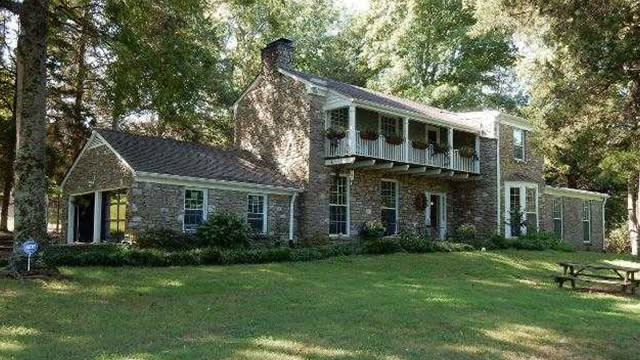
This stone house was built in 1925 and purchased in 1952 by “Mr. Country,” Carl Smith, just weeks before his marriage to June Carter.
The farm remained home to June and daughter Carlene after the couple’s 1956 divorce, during which time The Carter Family became a regular Grand Ole Opry act.
‘Athens of the South’: How the Parthenon became an iconic part of Nashville
In 1963, June wrote “Ring of Fire” here with Merle Kilgore, a certified Gold single recorded soon after by Johnny Cash and The Carter Family. The Carter Family toured with Cash, often appearing on his show. June and Johnny recorded several duets and married in 1968.
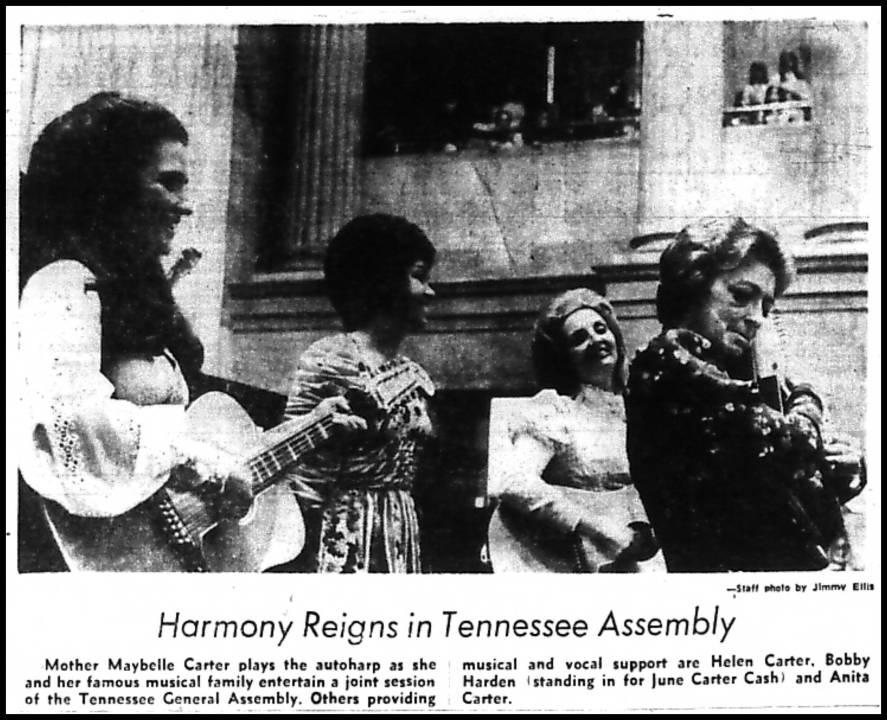
“Mother Maybelle” Carter, who developed the transformative “Carter Scratch” guitar picking style, would later move into the home with her husband Ezra in 1971 during his illness. She stayed at the home until her death in 1978.
A historical marker can be found just outside of the home on Gibson Drive in Madison.
Tennessee State University Marching Band “The Aristocrats”
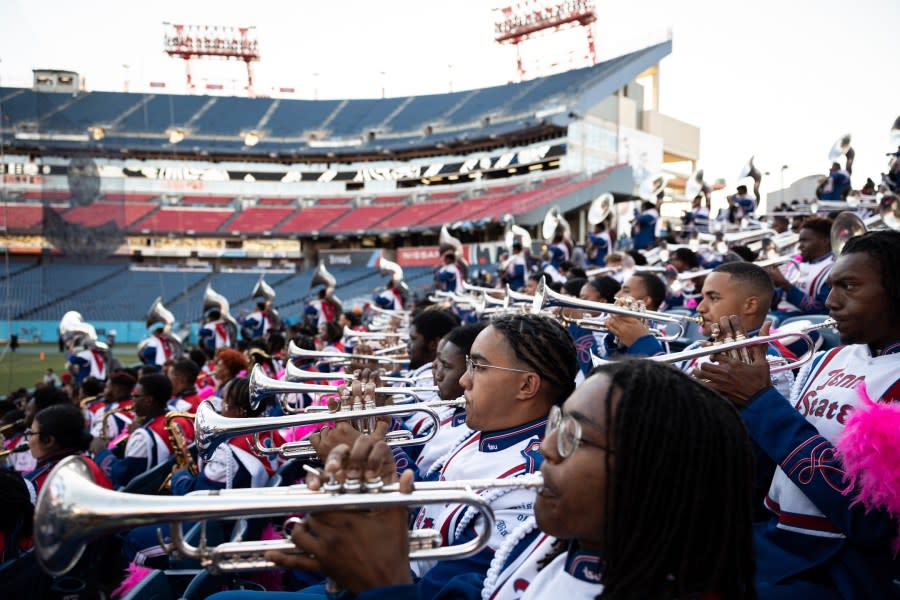
The 100-piece marching band known as The Aristocrats was formed in the fall of 1946 and soon took to the field at Tennessee State University. The marching band has since developed into a premier university band known for its spectacular performances.
They have performed in Asia, Africa, North America and Europe on multiple occasions. The Aristocrats were the first Historically Black College and University band to appear on national television during a 1955 NFL game between the Chicago Bears and the L.A. Rams.
In 1961 they were invited to perform for the inauguration of President John F. Kennedy, which was also a first for any HBCU. The historical significance of the band is recognized by a historical marker in Hadley Park on Jefferson Street.
WDAD Radio Station “Where Dollars are Doubled”
Nashville’s first commercial radio station WDAD operated at this site above Dad’s Radio Supply Store. Launched in Sept. 1925, WDAD was Nashville’s first studio to broadcast country and blues music nationwide with artists such as Humphrey Bate, Uncle Dave Macon, DeFord Bailey and Bessie Smith.
Riding the nostalgia wave inside Opryland USA
WDAD’s old-time fiddle contests inspired rival station WSM to create the Grand Ole Opry. Due to street widening, WDAD relocated and became WLAC in 1926. The building would later become the Roy Warden Piano and Organ WB Co., a popular music store.
The store operated here for over forty years. Listed in the National Register of Historic Places in 1984, the building is one of Nashville’s finest examples of early 20th century commercial design.
A historical marker was placed just outside the building on U.S. 431, north of Commerce Street.
Birth of Bluegrass
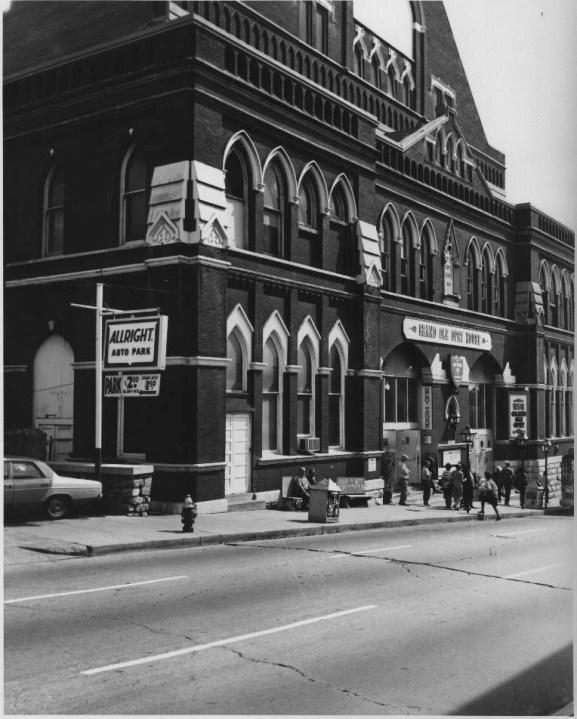
In December 1945, Grand Ole Opry star Bill Monroe and his mandolin brought to the Ryman Auditorium stage a band that created a new American musical form.
With the banjo style of Earl Scruggs and the guitar of Lester Flatt, the new musical genre became known as “Bluegrass.”
Augmented by the fiddle of Chubby Wise and the bass of Howard Watts, also known as Cedric Rainwater, this ensemble became known as “The Original Bluegrass Band,” which became the prototype for groups that followed.
⏩ Read today’s top stories on wkrn.com
A historical marker commemorating the birth of Bluegrass music can be found next to the Ryman Auditorium on 5th Avenue North, 0.2 miles north of Broadway.
For the latest news, weather, sports, and streaming video, head to WKRN News 2.

